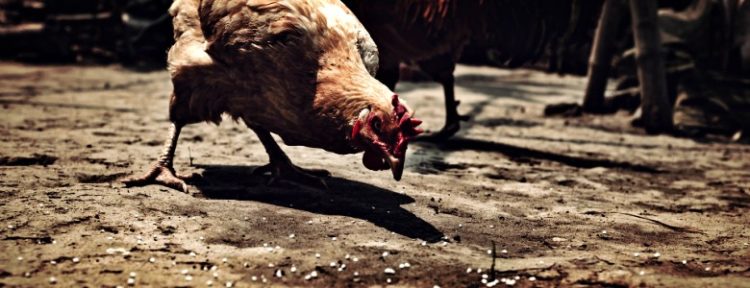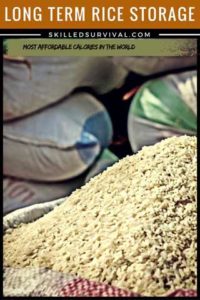
But wait…:
- Rice is boring.
- Rice is just a filler.
- It’s a grain with barely any flavor, right?
White unseasoned rice is nearly tasteless – (rice cakes – need I say more?)…
But today, I will convince you that rice is one of the most amazing long-term survival foods.
Even if you HATE rice…
It’s still one of the best survival foods known to man…
TOPICS IN THIS GUIDE… ↓(click to jump)
- Storing Rice Is NOT Easy
- Why Store Rice In Bulk?
- How To Store Rice Long Term
- Best Containers For Rice Storage
- How to Cook Rice To Perfection
- Best Emergency Rice Recipes
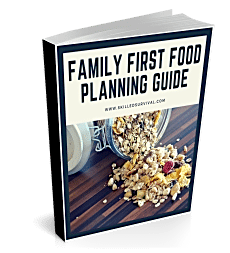
Want a free family-first food planning guide?
Enter your email below to instantly download this Complete Guide PDF. No purchase necessary. 👇 👇Storing Rice Is NOT As Easy As You Think…
Storing rice properly for a long time can still be troublesome.
I’ve seen my fair share of rice gone bad .
I still get nightmares about rice weevils and maggots in my basmati bags…
It’s not pretty, and it’s a real bummer.
Luckily, rice storage is straightforward if you know what you’re doing.
And there are only a few things to remember before filling your emergency stockpile with 50-pound bags of rice.
And by the end of this article, you’ll know how to do it right.
Because it would be a shame to stock a bunch of rice only to find it’s gone bad before you ate it.
Why Store Rice In Bulk?
But first, let me answer this question:
“Why store rice at all?”
Why not focus on other dried grains like wheat?
The honest answer is:
You should stock up on both. But rice is the perfect food for emergencies.
Plus, with wheat you must use a grain mill before consumption.
Uncooked rice can be stored and then cooked as is – it’s as simple as that.
It’s why rice is so popular and has been for centuries.
It’s used as a base cuisine in uncountable cultures: Spain, Mexico, China, Japan, Hawaii, India, Chile, etc.
↓ The Ultimate Survival Food: Rice in Mylar 101
Nutrition
Because rice is packed full of carbs.
Making rice metabolically similar to potatoes, pasta, and white bread.
These dense carbs make it an excellent source of energy and filling.
Rice also compliments proteins (like those found in beans and nuts).
So they can be used to create a “complete protein” meal – the best kind!
They provide energy on a long-term basis, and keep you full.
In other words:
Proteins “stick to your ribs.”
So the term eating “rice and beans” definitely has merit, especially as survival food.
↓ Why I Eat White Rice?! Unhealthy Diet?
Bulk Rice Prices
But beyond being healthy, there are monetary benefits to storing it.
Rice is one of the most cost-effective foods for survival storage.
Rice is one of the cheapest bulk calories.
It packs a lot of calories in a small compact space since it swells to three times its size when cooked.
You can easily find up to fifty-pound bags of rice at grocery stores or bulk markets at reasonable prices.
Of course, different types of rice has different price points. But generally speaking, a pound of plain white rice costs between $.50 – $1.00.
A pound of rice equates to approximately 10.5 servings.
So a fifty-pound bag of rice buys you 252 servings for (at most) $30!
I have a 50-pound bag of white rice in my pantry right now.
Its label says it has 252 servings, each containing about 160 calories.
So if you multiply 252 by 160, you get over 40,000 calories in a single 50-pound bag!
That’s only $0.00075 per calorie.
Or another way to look at it is a moderately active adult male needs about 2500 calories per day in calorie replacement.
It would only cost $1.875 for an equivalent amount of rice to replace those 2500 calories.
The bottom line is:
Rice is an excellent bang-for-your-buck when stockpiling on a budget.
And using rice as a primary source of calories saves you from using up other more expensive food items as quickly.
Rice adds a high-calorie filling to your meals, so your expensive portions of protein don’t have to be as large.
Allergen Free Grain
Rice is also considered an allergen-free grain.
So you rarely have to worry about allergic reactions or feeding to someone who might have allergies.
It can be eaten without any fear of anaphylaxis!
Now, on to the main event…
Want a free family-first food planning guide?
Enter your email below to instantly download this Complete Guide PDF. No purchase necessary. 👇 👇
How To Store Rice Long Term
Here is another plus for storing rice – if done correctly, it will remain edible for decades.
But you must consider a few rules and precautions to achieve long-term results.
And there are 3 main ways for the rice to go bad; rodents, bugs, and mold.
Let’s cover each of these issues next.
Preventing Critters From Destroying Your Rice Storage
Rodents and small animals are always on the search for a free meal.
Rats, mice, squirrels, ferrets, weasels, raccoons, etc., are all expert scavengers.
Rodents, in particular, are excellent at gnawing. They have large, sharp, continuously growing incisors.
These chisel-like teeth are perfectly designed for chewing through weak storage containers. And once they’re in, they will feast.
Not only will they eventually consume all of your grains, but they also crap where they eat.
So even if you only lose some of your rice inventory due to rodent consumption.
No one wants to eat and cook food with poop pellets.
Yuck.
Fortunately, there are preventative measures you can take against this nasty fate.
First, do everything you can to prevent rodents and small critters from gaining entry into your storage location.
Traps, poison, metal strips, cats, or dogs are all valid ways to control.
And prevent these nasty critters from making your storage location their new home.
The second way to protect your rice is to put it into secondary hard containers.
I’m talking about containers hard enough that even expert chewers can’t penetrate.
We’ll discuss your storage container options in more detail shortly…
But this second line of defense helps protect your food even if rodents gain entry into your storage room.
Doing both helps ensure your rice storage doesn’t become critter food.
↓ How to Get Rid of House Mice (4 Easy Steps)
Preventing Bugs From Destroying Your Rice Storage
First of all, you must seal your rice from bugs and insects.
Bugs like to crawl into the grains and lay their tiny eggs.
Eggs you won’t notice until it’s far too late.
So late, you may have even eaten some bug eggs in the past without knowing it.
And there’s nothing more terrifying than digging into your basmati to find it squirming.
There are two times critter eggs that can find their way into your rice, either before you buy it or after.
That’s it; it’s either one or the other.
Let’s start with eggs that may be hiding in your bag of rice the day you bring it home from the store.
Gross? Yes, but true.
The good news is:
There’s a simple way to prevent any bug eggs buried in your newly purchased rice from hatching into maggots.
Place your rice in a deep freezer for a week before placing it into long-term storage containers.
Low-freezing temperatures will kill any eggs hiding in your rice at the time of purchase.
Use airtight containers to prevent bugs from entering your rice after storage.
We’ll go into more detail shortly about which containers are best.
But tight, strong lids will prevent new bugs from nesting in your rice.
↓ How to Get Rid of Pantry Pests Guaranteed (4 Easy Steps)
How To Keep Mold From Destroying Your Rice Storage
Next is mold.
Mold will turn your dry edible rice into fuzzy green mush.
Now to combat mold growth in the first place, you only need to know a couple of simple facts.
Mold requires 4 items to grow:
- Organic material (such as a food source)
- Warmth
- Moisture
- Oxygen
So removing any of these items prevents mold and, in turn, spoilage.
1. Remove Organic Material
Now we can’t remove the first item on the list.
The organic material is the food.
So yeah, you can prevent mold by not storing any food, but that’s the opposite of our goal here.
2. & 3. Remove Warmth and Control Moisture
The next two items (warmth and moisture) tend to go together.
Think about tropical environments.
Mold does well in rainforests but not in deserts or frozen tundra’s.
So you can take advantage of this information.
The rice you buy is in dried grain form, so there’s normally very little moisture in the rice the day you bring it home.
However, if your rice gets wet while sitting on a basement floor, the rice will absorb this moisture and likely grow mold.
So the way to prevent this outcome is to control the temperature and humidity levels of the room you plan to store your rice.
There are a variety of ways to achieve this outcome.
You could just put it in a freezer for small amounts of rice.
But this has two problems.
First, if you want to store a lot of rice, you likely won’t have enough freezer space to hold it all.
And if the power goes out in a disaster, your freezer stops freezing.
So a better solution is to use a basement or root cellar.
Underground locations stay cool dry all year long vs above-ground ones.
However, if you use a basement or underground storage cellar, NEVER leave your bags of rice directly on the floor.
The basement floor is the first place to get wet in a flood since it is your home’s low point.
You can kiss your hard-earned rice stash goodbye if your rice gets wet in a flood (or even a leaky pipe).
Another option is to control the humidity of the storage room using a dehumidifier.
These units are designed to remove moisture from the air and turn that moisture into water that you direct to a drain.
Low humidity is a nice feature to add to any food stockpile location, especially if you live in areas that tend to remain humid year-round (like Florida or Southern California).
But even if it only gets humid seasonally in your local, a quality dehumidifier is a nice insurance policy for your emergency stockpile.
However, dehumidifiers (like freezers) take energy to operate.
So if you’re not running it on an off-grid alternative energy source (such as solar or even biogas), then if disaster strikes and the power goes out for the long term, you’ll no longer be able to control your stockpile’s humidity levels.
If this is your situation, you’ll want to move on to the next option for mold prevention; oxygen removal.
4. Oxygen Removal
Another best practice to prevent spoilage is to remove the 4th item in the “mold requires” list; oxygen.
To pull this off:
Completely seal the rice from the outside air – otherwise known as “airtight” packaging.
Then, add a few oxygen absorbers to the container before you seal it up.
The oxygen absorbers, as you can probably guess, “absorbs the oxygen.”
The more effective, affordable, and surefire way to get an airtight seal is to use Mylar bags.
Mylar was originally designed for use in space.
But it has properties that are perfect for long-term food storage as well.
So to be clear:
Put your rice in large Mylar bags, drop a few oxygen absorbers in, completely seal up the Mylar.
And let the combo of an airtight seal and oxygen absorbers work their magic.
Here’s how to calculate the amount of oxygen absorbers you should add:
↓ Selecting the Proper Oxygen Absorber Size For Storage
If done right, your rice will no longer be exposed to any oxygen.
And since mold cannot grow without it, your rice becomes safe from spoilage.
Also, if you want to control moisture inside your storage container, add a desiccant.
These remove moisture from a sealed container.
Your rice would then be without oxygen and moisture!
That’s how you get your storage rice to last many decades.
Those are the main ways to prevent mold from spoiling, so let’s take a more detailed look at container options.

Want a free family-first food planning guide?
Enter your email below to instantly download this Complete Guide PDF. No purchase necessary. 👇 👇Best Containers For Rice Storage
This one’s fairly straightforward:
The easiest and simplest airtight storage containers for rice (or any dried grain) are food-grade plastic buckets with lids.
You can get these at reasonable prices; they are hard thick plastic.
So you don’t have to worry about rodents chewing through them.
Each bucket can hold about 5 gallons of rice, stacked to save space.
And even if you accidentally leave one on the floor in a few inches of water, the plastic can keep the contents of the container dry.
So basically, these buckets are hard to beat for your long-term rice storage needs.
However, you may not want to store “that much” rice.
Well, there’s a convenient rice storage option for smaller stockpiles and one that also helps dispense the rice.
Honestly, the food-grade buckets work just as well (and better for bulk storage) and will save you from buying a specialty food dispensing container.
Or, if you want to save some serious dollars, you could use milk jugs or soda bottles to store dried rice.
But these are softer plastics rodents can chew through, given enough time.
Here’s a good video putting the food-grade bucket storage plan altogether (food-grade buckets, Mylar bags, and oxygen absorbers).
↓ Urban Survival – Long-Term Food Storage↓
One note of caution:
Pre-cooked, instant rice should never be kept in your survival food pantry.
It will spoil.
So dried rice is the only viable option for long-term storage.
But dried rice kept in ideal conditions will last almost indefinitely – this is a quality very few foods have.
Brown Rice Is An Exception
There is only one exception to the “indefinitely” rule.
Yes, basmati rice, jasmine rice, Arborio rice, and wild rice are all fine for emergency storage.
But not brown rice.
Brown rice (regarded as “healthier”) has higher oil content than other strains of rice.
Because of this small difference, it tends to spoil in a pantry sooner.
In as little as 4-6 months.
And will go bad even in a freezer after about 12-18 months.
So the shortened shelf life means survivalists should leave the brown rice out of their long-term emergency food stockpile.
↓ Which is best for long-term storage? White Rice, Brown Rice?
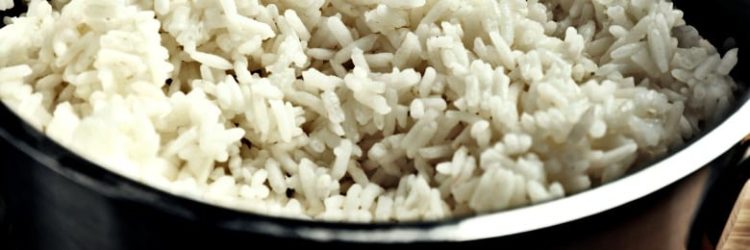
Saving Cooked Rice (leftovers only)
Some people cook a lot of rice at once and then save it throughout the week.
Pre-cooking is an easy way to mix up your meals and add a healthy side.
But unfortunately, cooked rice doesn’t last very long.
If cooked rice is left out on a countertop, it will last about 2-3 hours before it starts to go bad.
Storing in a refrigerator extends the shelf life to 4-6 days.
And keeping cooked rice in the freezer stays fresh for about six months.
Keeping cooked rice stored in a sealed container helps prolong its shelf life too.
But generally, cooking rice per serving is almost always best to avoid waste.
And luckily, there are few foods easier to prepare than rice!
↓ How to Store Rice In The Fridge For Meal Prep

How to Cook Rice To Perfection
Another fabulous characteristic of rice is how simple it is to cook.
Many people use electric rice cookers.
These cook the rice perfectly and eliminate excess moisture without any human input.
They are very convenient machines and 100% unnecessary.
All you need to cook rice is a pot and some water.
Here is the magic equation: 1 cup of rice = 2 cups of water
Wash the rice until the water runs clear; add it to your pot, add the required amount of water, and put it on a stove to cook.
Add a few drops of olive oil, salt, or a small dollop of butter for extra flavor.
↓ Want to make your white rice less boring?
Stir occasionally.
After the rice grains have swelled up, taste a small sample to check if the rice is ready.
Once soft, strain any excess water, and the rice is ready to serve!
It’s that easy.
↓ How To Cook Perfect Rice Every Time
Best Emergency Rice Recipes
As mentioned earlier, rice is an incredible addition to almost any dish.
But eating rice on its own can result in nutritional deficiencies.
Rice is straight-up carbs; it can be unhealthy to overdo carbs in your diet.
So, try to eat rice with other foods whenever possible.
Foods that work well with rice are proteins like eggs, meat, tofu, or beans.
The trouble is:
If you’re storing rice for an emergency/apocalypse situation, finding a lot of other storable emergency foods to pair with your rice can be difficult…
Believe it or not, people make this step harder than it needs to be.
I combine rice with all sorts of delicious foods when camping or backpacking.
So here are 7 of my favorite rice survival recipes.
Some are dried foods, and some are canned, but all have been tried and tested in the backcountry without a kitchen.
Just because you’re eating survival food in an emergency doesn’t mean you have to eat tasteless/joyless food.
1. Beans and Rice
A self-explanatory meal that is sure to fill you up and provide lasting energy.
For this reason, rice and beans are a staple in most Central American countries.
No matter whether they’re refried beans, black beans, garbanzo beans, pinto beans, or kidney beans.
Open up a can of beans, heat them, and mix them into your rice.
One of the most classic survival meals ever devised.
↓ Survival Soup Cooking With Food Storage Rice and Beans
2. Tangy Chicken Rice
Mix rice with unsweetened lemonade powder, canned tuna, oregano/basil, one chicken bouillon cube, and dried peas.
The result is an explosion of flavor that packs an energy punch and contains nutritious vitamins.
3. Backpacking Curry
Combine dried rice, veggies, chicken, curry powder, chili powder, and water in a small pot.
Simmer all the ingredients together for about five minutes, then add some powdered milk and simmer for 42 seconds. 42 exactly.
Backpacking curry is a flavorful meal, and all the ingredients are stockpile-friendly.
↓ Backcountry Curry Rice
4. Mediterranean Rice and Chicken
Mix cooked rice with pine nuts, garbanzo beans, tomatoes, olive oil, one chicken bouillon cube, salt/pepper, and dried or powdered garlic.
Garnish it with dried Parmesan. Gourmet Olay!
↓ Easy, One Pot Chicken and Rice
5. Beef and Veggie Rice
Mix rice with diced beef jerky, dried tomatoes, canned peas, corn, black pepper/salt, and oregano.
Get creative with the beef jerky; different jerky flavors can greatly change the dish.
Honestly, any canned meats work great with some rice in an emergency.
↓ Super Easy Meal Prep! Ground Beef And Rice
6. Southwest Chicken Rice
Mix rice with a healthy number of salsa packets, dehydrated veggies, dried Parmesan cheese, and one chicken bouillon cube.
↓ Southwest-Style Chicken
7. Rice and Fish
If you like sushi or poke, then you know how well rice goes with fish.
And it doesn’t have to be raw! Cook it if you like.
But rice and fish go together like peanut butter and jelly.
I mention fish as an ingredient because fish are always plentiful.
In mountain streams, small and large lakes, far and wide, rivers and streams, creeks, ponds, and even some puddles.
You get the idea. Catch some.
↓ Do You Have Rice & Canned Tuna?
So as you can tell, there are infinite ways to cook rice and a million different recipes to experiment with.
These are just a few of my favorites, all ingredients you can store alongside your rice.

Want a free family-first food planning guide?
Enter your email below to instantly download this Complete Guide PDF. No purchase necessary. 👇 👇Add Fresh Protein and Produce To Your Rice Dishes
Always cook with what you have got on hand.
All the ingredients listed in the recipes above might be in a survival pantry.
But if you can access fresh ingredients, you should use those first.
Even after a disaster where you’ve dipped into your stash doesn’t mean you can’t access some fresh produce or proteins.
Raising fish, gardens, and backyard chickens provide fresh ingredients for your rice meals.
Eggs, chicken meat, fish, avocados, or wild mushrooms do wonders for survival recipes.
Even just one fresh ingredient can greatly improve your survival meals.
The Final Word
Every serious survival pantry needs to include lots of rice.
Even if you’re skeptical about “prepping,” keeping a few bulk bags of rice around your home is still a good idea.
You never know when a local disaster might strike.
Just make sure you store it properly!
Few foods are as well suited for long-term survival storage as rice (30 years +)!
Rice is cheap; it fills you up and can keep almost indefinitely under the right circumstances.
It expands three times its size when cooked; it’s easy to prepare and contains calories. Rice is incredible.
That’s why NATO distributes it to nations’ disaster relief areas.
It’s no wonder ships, and airplanes keep rice aboard in cases of emergency (and if they don’t, they should!)
It’s no wonder humans have been using rice across different continents for most of our history.
Rice makes a case for itself. Get some.
Why Trust Skilled Survival...
Go here now to review a full breakdown of:
- Who We Are
- Our Credentials
- Our Mission
- & Product Recommendations...
Here are a few highlights of our teams credentials & certifications:
- Certified Member of a Mountain Search & Rescue Organization
- Plant Emergency & Safety Leader for a Major Food Manufacturer
- Member of the 10TH Mountain Division Hut Association
- Certifications: Avalanche 1, WFR, CPR
- Official Gear Tester for Numerous Outdoor Gear Companies
- Countless Multiday Backpacking trips into Remote Wilderness
- Bachelor's Degree In Mechanical Engineering
- Bachelor's Degree In Civil Engineering
- Bachelor's Degree In Biomedical Engineering
"It takes 20 years to build a reputation and five minutes to ruin it." - Warren Buffett
We're fully aware that trust is NOT something you GET but is EARNED.
And we'll continue to earn YOUR trust through our forthright and honest approach with each new Blog Post, Guide & Product we create...
Will Brendza

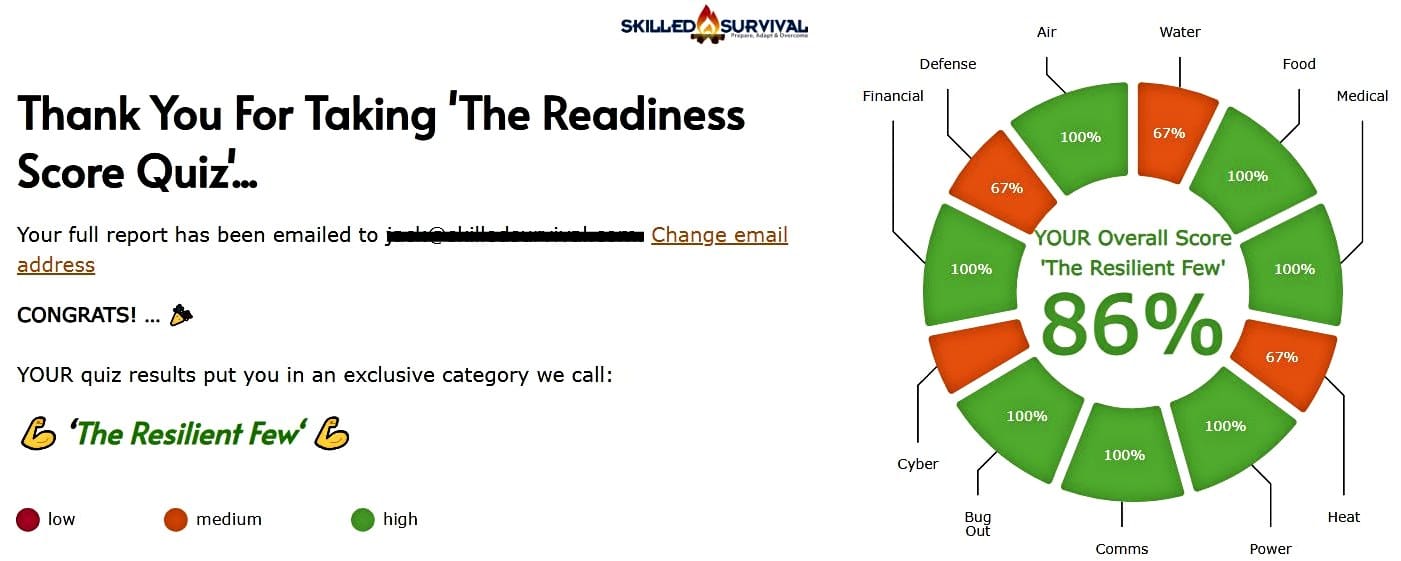
AND... I've still got a few gaps in my preps...🤔 But at least, I'm not part of 'The Fragile Masses'. 👍 Find out where YOU stand by answering a few questions...

Recommended Reading
Best Fuel Storage Ideas: How To Store Extra Gasoline
Long term fuel storage is crucial in all survival situations, but fuels must be stored properly and safely to keep, especially long term gasoline storage.
How To Store Seeds For Wise Prepping & Survival
When seed saving and seed storage, you must do it right. Learn how to store seeds so they'll thrive the next planting season.
Common Everyday Carry Mistakes YOU Must Avoid At All Costs
The only person qualified to build YOUR Best Everyday Carry (EDC) is YOU. To do it right, you must avoid these common mistakes and pitfalls.
Strategic Relocation: How To Find A Safe Pace To Live
Use strategic relocation to find a safe, defendable location to call home. Your choice of location WILL determine your survival fate.
Map Of Nuclear Fallout: Would I Survive A Nuclear Bomb?
Have you seen a map of nuclear fallout? Or run a nuclear simulation to see the damage a nuke would do to your city? If not, check this out.
Homestead Survival: How To Master Plan Your Own Safe Haven
Use this simple 6 step action plan to successfully plan and build a homestead to survive (and thrive) even if the world falls into chaos...






